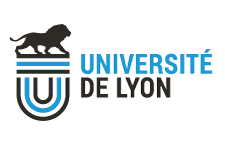Boutique des Sciences > Projects > 2014-2015
Study of the various methods of local governance related to nocturnal lighting, with an analysis of their origins and associated risks
Environmental protection associations strive to convince elected officials to extinguish their public lighting systems. To this end, the associations rely on arguments focusing on economic and ecological considerations. Such actions incite more and more municipalities to question their public lighting policies and implement extinguishing measures. However, many municipalities counter these arguments with security considerations, arguing that extinguishing public lighting poses a threat to public safety. Dialogue is difficult between these two opposing groups.

The Fédération Rhône-Alpes de Protection de la Nature (“Rhône-Alpes Federation for Nature Conservation”, FRAPNA) solicited the Université de Lyon Science Shop to consider the municipalities’ argument: “Does the absence of public lighting pose a public safety threat?” Following discussion, the Science Shop’s scientific committee reformulated the initial FRAPNA question, proposing a study of local governance methods related to nocturnal lighting, focusing on their origins and associated risks. The study – carried out by a student from the Civil Engineering and Urban Development Department of INSA Lyon, as part of an end-of-studies project – was designed to answer the question: "What is the decision-making process that pushes certain municipalities to completely or partially extinguish their public lighting?"
The decision-making process leading a municipality to pursue a policy of extinguishing its public lighting is complex. It is based on the municipality’s technical, geographical and demographical context, on economic considerations and on safety fears inherently associated with darkness. This complexity makes it impossible to design plans of action applicable to all municipalities, which must tailor their policies to suit their specificities. Residents, far from clinging to a well-lighted environment, are in favour of policy modifications. However, the total extinguishing of public lighting would seem to encounter various oppositions, and creative, innovative solutions must be found to reconcile the needs of the different stakeholders. The implementation of these solutions must involve the local residents in favour of dialogue. The technical advances made over the past few years and the obvious necessity of changing our energy practices will force a public lighting revolution to occur over the coming years.
The decision-making process leading a municipality to pursue a policy of extinguishing its public lighting is complex. It is based on the municipality’s technical, geographical and demographical context, on economic considerations and on safety fears inherently associated with darkness. This complexity makes it impossible to design plans of action applicable to all municipalities, which must tailor their policies to suit their specificities. Residents, far from clinging to a well-lighted environment, are in favour of policy modifications. However, the total extinguishing of public lighting would seem to encounter various oppositions, and creative, innovative solutions must be found to reconcile the needs of the different stakeholders. The implementation of these solutions must involve the local residents in favour of dialogue. The technical advances made over the past few years and the obvious necessity of changing our energy practices will force a public lighting revolution to occur over the coming years.
CSO
ANPCEN - Association Nationale pour la Protection du Ciel et de l'Environnement Nocturnes FRAPNA
Représentant : M. Gérard GAULE, correspondant Loire
FRAPNA Rhône – Fédération Rhône-Alpes de Protection de la Nature
Représentante : Mme Lydie NEMAUSAT, Chargée de missions veille écologique
Représentant : M. Gérard GAULE, correspondant Loire
FRAPNA Rhône – Fédération Rhône-Alpes de Protection de la Nature
Représentante : Mme Lydie NEMAUSAT, Chargée de missions veille écologique
student
M. Pierre LAVISSE – 5ème année au département Génie Civil et Urbanisme (option Aménagement et Renouvellement Durable), INSA Lyon
researcher
Academic tutor :
Jean-Michel DELEUIL - Urbanisme, Equipe EVS ITUS (UMR 5600), INSA Lyon
Jean-Michel DELEUIL - Urbanisme, Equipe EVS ITUS (UMR 5600), INSA Lyon



 WebAdmin
WebAdmin